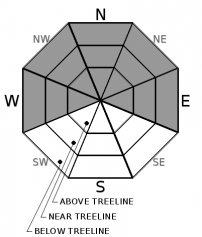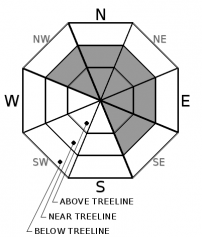| Wednesday | Wednesday Night | Thursday | |
|---|---|---|---|
| Weather: | Mostly cloudy. Snow levels below 7000 feet. Chance of precipitation is 5%. | Partly cloudy. Snow levels below 7000 feet. Chance of precipitation is 5%. | Partly cloudy. Snow levels below 7000 feet. Chance of precipitation is 0%. |
| Temperatures: | 38 to 43. deg. F. | 20 to 26. deg. F. | 37 to 42. deg. F. |
| Mid Slope Winds: | Light winds becoming southwest around 15 mph in the afternoon. Gusts up to 30 mph. | Southwest around 15 mph with gusts to 30 mph in the evening becoming light. | Light winds. |
| Expected snowfall: | No accumulation. | SWE = none. | No accumulation. | SWE = none. | No accumulation. | SWE = none. |
| Wednesday | Wednesday Night | Thursday | |
|---|---|---|---|
| Weather: | Mostly cloudy. Snow levels below 7000 feet. Chance of precipitation is 5%. | Partly cloudy. Snow levels below 7000 feet. Chance of precipitation is 5%. | Partly cloudy. Snow levels below 7000 feet. Chance of precipitation is 0%. |
| Temperatures: | 34 to 39. deg. F. | 19 to 25. deg. F. | 33 to 39. deg. F. |
| Ridge Top Winds: | Southwest 15 to 25 mph. Gusts up to 30 mph increasing to 45 mph in the afternoon. | Southwest 15 to 30 mph with gusts to 50 mph decreasing to 15 to 20 mph with gusts to 45 mph after midnight. | South around 15 mph. Gusts up to 35 mph in the afternoon. |
| Expected snowfall: | No accumulation. | SWE = none. | No accumulation. | SWE = none. | No accumulation. | SWE = none. |




















